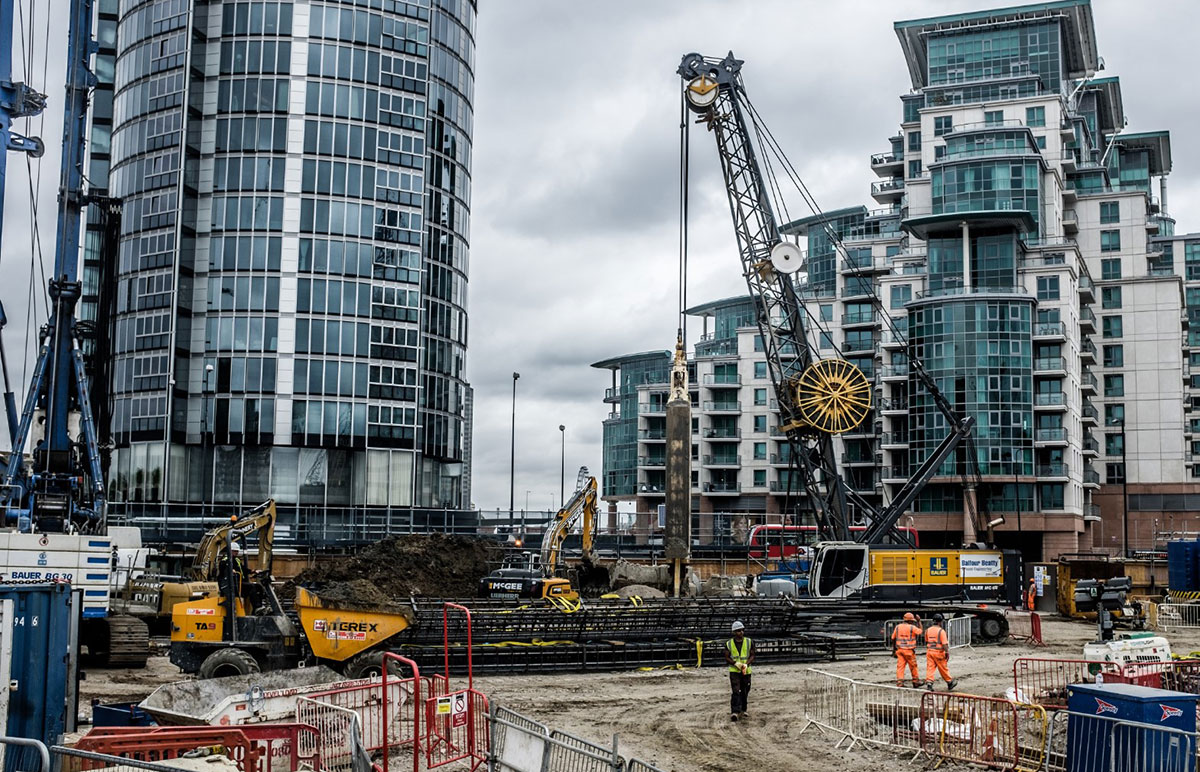10 Simple Techniques For Geotheta
6 Simple Techniques For Geotheta
Table of ContentsThe Geotheta StatementsThe Basic Principles Of Geotheta How Geotheta can Save You Time, Stress, and Money.The 4-Minute Rule for Geotheta
They team up with civil engineers, structural designers, engineers, and various other specialists to incorporate geotechnical factors to consider right into the total project layout and building and construction procedure. This calls for reliable team effort, sychronisation, and communication to guarantee that the geotechnical aspects straighten with the task goals and fulfill regulative requirements.Mining & Products Design: Principles of exploration, infiltration prices, and elements impacting the option of drilling approach. Characteristics of explosives, shooting systems and blast patterns. Blowing up strategies in surface and below ground operations. Special blowing up techniques at excavation perimeters. Vibration and noise control. Mechanical and constant techniques to fragmentation, including longwall shearing and fullface boring.
Integrated analysis of fragmentation and comminution operations. Offered by: Mining & Products Engineering.
Rumored Buzz on Geotheta
Bachelor's level programs in civil, geotechnical, geological, and environmental engineering commonly last four years and include general education and learning courses in English, social science, and the liberal arts, along with courses in sophisticated maths, architectural geology, and liquid mineralogy. (https://geotheta.jimdosite.com/)
Geotechnical design involves the evaluation of the dirt and rock problems at a particular site, and their ramifications for the growth of that website. As a lot of frameworks rely upon the ground for assistance, it is without shock that a thorough understanding of the ground conditions, and the suitability of foundation systems, are important to the long-lasting security and efficiency of the structure or framework.
Specialising in the examination of geological formations and ground behaviour, geotechnical engineers execute clinical examinations and testing to understand the impact these geological formations might have on the design and building of structure, civil and framework projects. This proficiency is critical for the layout and building of buildings, roadways, passages, dams, bridges, and water and sewer system.
The geotechnical team at Douglas Allies routinely talk to designers, design designers, developers, and contractors to make referrals on design and development propositions to make sure that the constructed frameworks are appropriately created for the ground problems. For instance, the design of footing systems requires to take into consideration the weight of the framework, the capacity of the ground to sustain that weight along with motion resistances and effective building and construction.
The 15-Second Trick For Geotheta
This task is significantly streamlined by the use our Douglas Map geospatial platform which makes this information conveniently accessible in an easy to utilize web browser user interface. A geotechnical engineer will certainly guide the exploration of boreholes and test pits to collect dirt and various other examples, and likewise assess surface functions and ground direct exposures to form a geotechnical design of the subsurface conditions.
Depending upon the task type and ground conditions experienced, lab screening might amongst other points evaluate stamina, compressibility, reactivity and/or permeability of soil and rock samples. Hereafter data is accumulated and collated, the results are used for a geotechnical design of the website, which is normally offered as sections across the site.

A geotechnical investigation naturally can just analyze the ground problems at the places pierced or excavated. Natural variations in dirt and rock conditions can take place across a site and between test areas. It is as a result excellent technique that the geotechnical designer be retained throughout construction of the job to offer on-site confirmation that the ground problems experienced follow the expectations and guidance supplied in the geotechnical examination record.
More About Geotheta
Geotechnical engineers use their comprehensive understanding of dirt and rock to examine risk and solve troubles on diverse infrastructure projectsGeotechnical design is a specialist branch of civil design which looks at the practices of planet materials and the application of dirt and rock mechanics. Geotechnical Engineers. As a geotechnical designer, you will assess the physical, mechanical and chemical properties of dirt and rock in order to develop structures, maintaining frameworks and earthworks
Geotechnical engineering is very closely linked to and overlaps with, both design geology and ground design - https://www.pubpub.org/user/ian-hammond. It's possible to specialise in geotechnics or help a geotechnical firm but be referred to as an engineering rock hound or a ground designer. As a geotechnical designer, you'll need to: build and maintain connections with customers and various other specialists entailed in the site, throughout each projectmaintain safety and security standards on site be conscious of expense effects when you make recommendationsstudy geological maps and airborne photos from a variety of sources and from various time periodsexamine building intends to see just how practical they are based on your understanding of the siteinvestigate dangers or geological dangers for the sitesearch for eco sensitive attributes, such as landfill beginning to establish valid and interpretive ground modelsplan area investigationsdrill and analyse examples of bedrock, dirt, groundwater and extra materials supervise other specialists on sitesolve technological issues as they arise, such as unforeseen frameworks at drill sitesmonitor conditions throughout and after building to make certain structures are stable in the brief and long termadding information gathered on site to your preliminary researchcreating geotechnical estimations, illustrations, and 2 or three-dimensional computer system designs translating the datamaking recommendations concerning the recommended use the website
